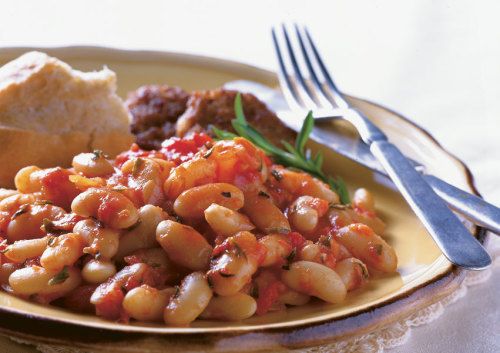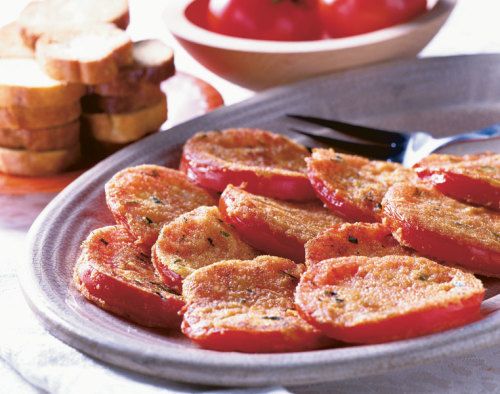
Even a kitchen philistine probably knows that basil goes with tomatoes, tarragon with chicken, and dill with salmon. But thrust a bunch of savory at anyone—even a top chef—and he or she might have difficulty deciding what on earth to do with the elusive herb. Unless, of course, the chef trained in French cuisine, for it is in Provence, that southern sun-baked area of France, where savory is most widely used. Little rounds of goat cheese are marinated in savory and local olive oil; wild rabbit is roasted on a bed of it; bunches of it are added to tomato sauce.
Part of the problem is that there are two savories, and summer and winter savory are considerably different in both application and taste. Summer savory has an extremely pleasing taste and slightly peppery aftertaste; it’s a fragrant flavor vaguely like that of thyme. It can be used raw or cooked. Winter savory should be used only in cooked dishes, however, as its flavor is fairly spicy, more bitter, and also rather coarse. Both herbs have a fairly strong, lingering taste. Add them judiciously to any dish.
The savories were a great favorite of the Romans, who included them in a vinegar-based sauce used with fish and meat dishes, rather like the classic mint sauce with lamb. The herb is now widely used in Central Europe where it seasons bean, pea, lentil, and sausage dishes. I would also recommend a sprinkling of summer savory in tomato dishes and with egg and cheese recipes. A tiny amount of winter savory lends an interesting background flavor to stuffings for pork or turkey, and also to good, old-fashioned meat loaf. Go on, give the savories a try; they are herbs with enormous potential.
This article originally appeared in Kitchen Gardener #16 (August 1998).
Fine Gardening Recommended Products

Gardener's Log Book from NYBG
Fine Gardening receives a commission for items purchased through links on this site, including Amazon Associates and other affiliate advertising programs.

A.M. Leonard Deluxe Soil Knife & Leather Sheath Combo
Fine Gardening receives a commission for items purchased through links on this site, including Amazon Associates and other affiliate advertising programs.

Berry & Bird Rabbiting Spade, Trenching Shovel
Fine Gardening receives a commission for items purchased through links on this site, including Amazon Associates and other affiliate advertising programs.




















Comments
Log in or create an account to post a comment.
Sign up Log in